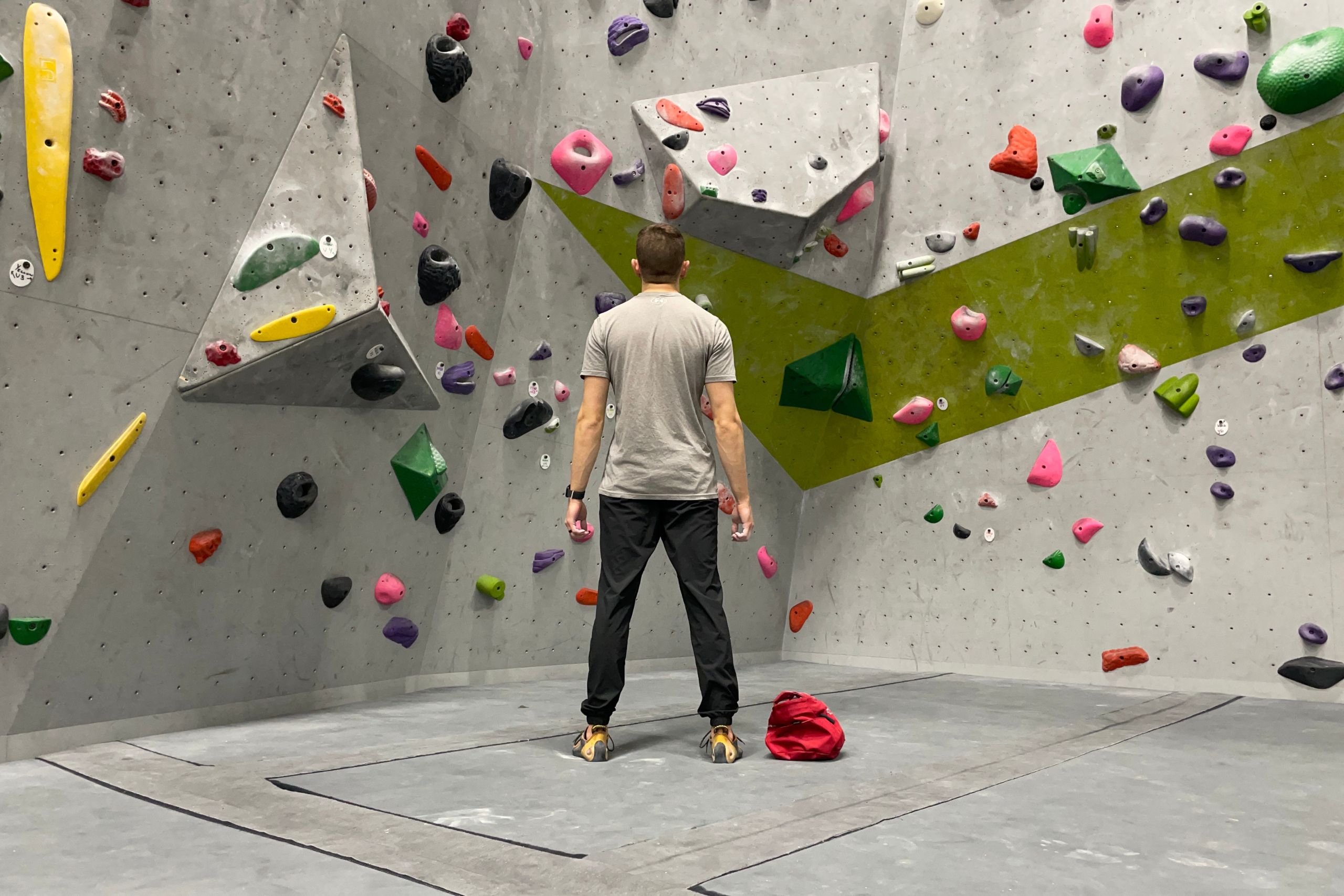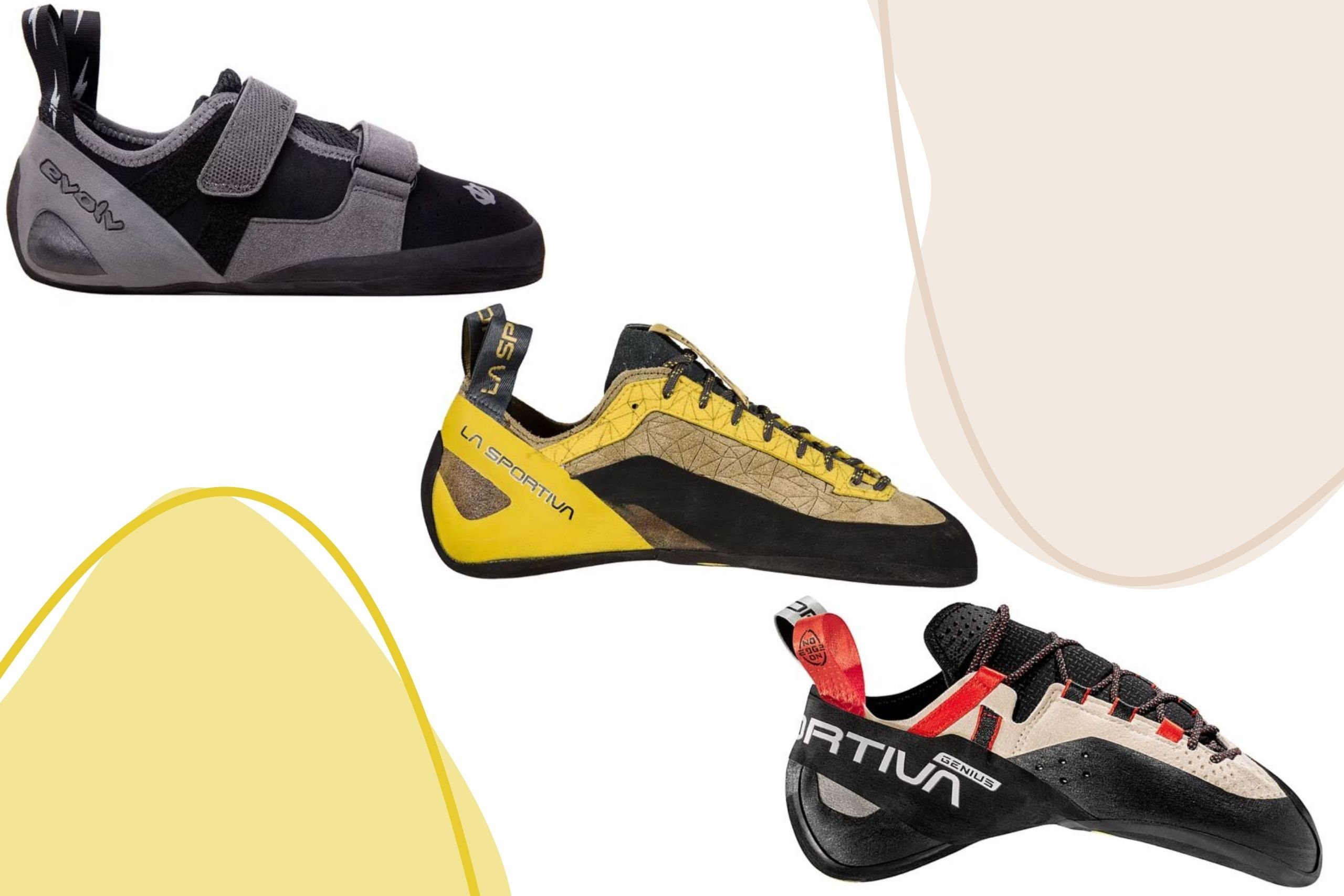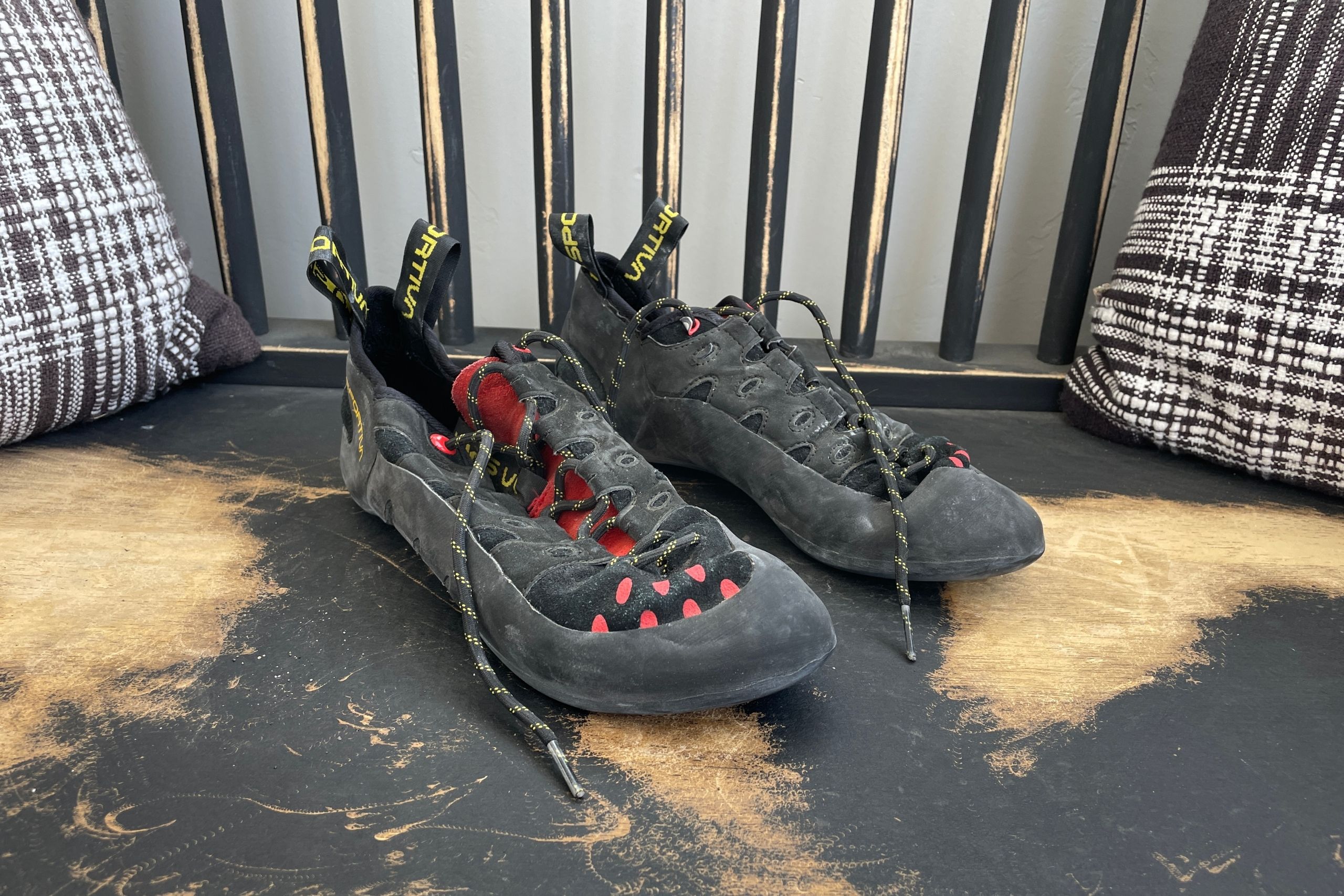Kamdyn Christiansen is the founder of climbingindoors.com, where this article originally appeared.
As I’m writing this, it’s –16 °F outside. When temperatures drop that low, it’s safe to say that staying indoors is best for everyone who doesn’t enjoy frostbite. If you’re in a similarly cold climate, or you’re just looking for something new to try, then indoor rock climbing might be perfect for you. More and more, you can find climbing gyms relatively close to you.
Back in 2018, one of my best friends invited me to go climbing at our city’s rock gym, and I’ve been hooked ever since. But, when you get into a new sport or activity, there’s always a steep learning curve. Whether it’s new vocabulary, skills, or gear, it can be a bit intimidating. All it takes is one lousy experience to break your decision to stick with it.
But we’ve got you covered. Here are the five essential pieces of equipment you need to start climbing indoors.
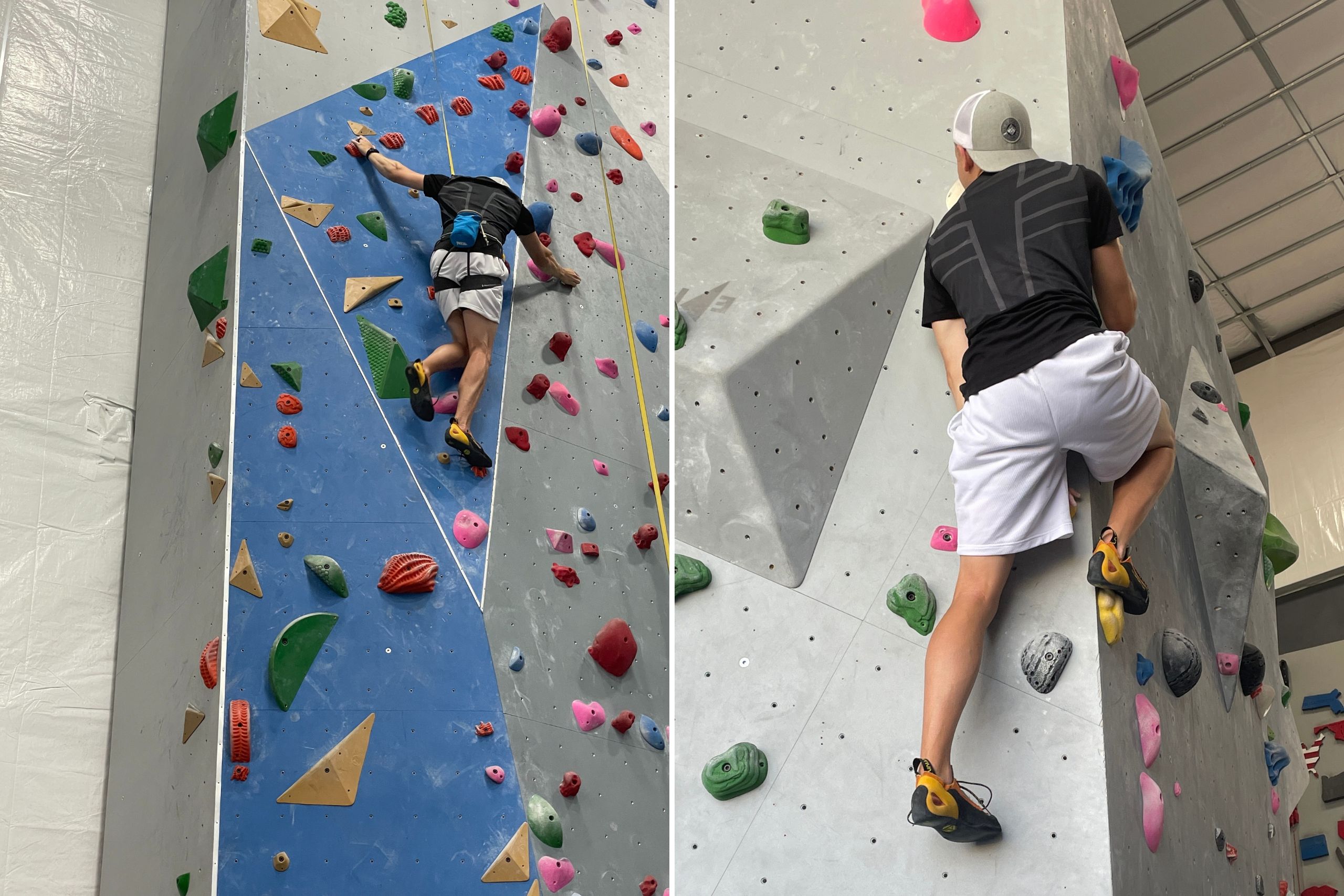
Top roping (left) vs. bouldering (right).
Photo by Kamdyn Christiansen
Choose Your Challenge
There are two types of climbing most gyms offer: top roping and bouldering. Top roping is what most people think climbing is: a tall wall with holds to get you to the top. Bouldering typically features shorter walls and is done without ropes.
Most rock climbing gear is transferable between different kinds of climbing. If you prefer lower heights and more technical routes, then bouldering is right up your alley. You’ll need some climbing shoes, a chalk bag, and chalk. That’s it. You’re ready to boulder. If you’re drawn to the endurance and high-elevation aspects of climbing, then you’ll prefer top roping. For this, you’ll need a harness and potentially a belay device, if your local rock gym doesn’t provide these.
The Best Beginner Climbing Shoes
You’ll want your climbing shoes to strike a balance between these two extremes: flat and flabby versus excessively stiff and rigid. The curve of the heel arch will be more drastic than all the other shoes in your closet. The heel arch should look like the top of an oval. The point on the toe should protrude to a soft tip—you’ll want to avoid shoes that are so pointy they look like a claw.
When it comes to choosing laced shoes, slip-ons, or velcro closures, it’s mostly a matter of personal preference. Laced shoes are less convenient but more adjustable and suitable for long-term ownership. Slip-on and velcro shoes are more convenient, but wear out faster.
In our view, the La Sportiva Tarantulace ticks all of the boxes. My friends, family, and wife have all picked these up and love them. For some of them, these shoes have lasted more than four years and are still going strong. Even when you move from a beginner to an intermediate climber, or start climbing outdoors, these will stick with you every step of the way.
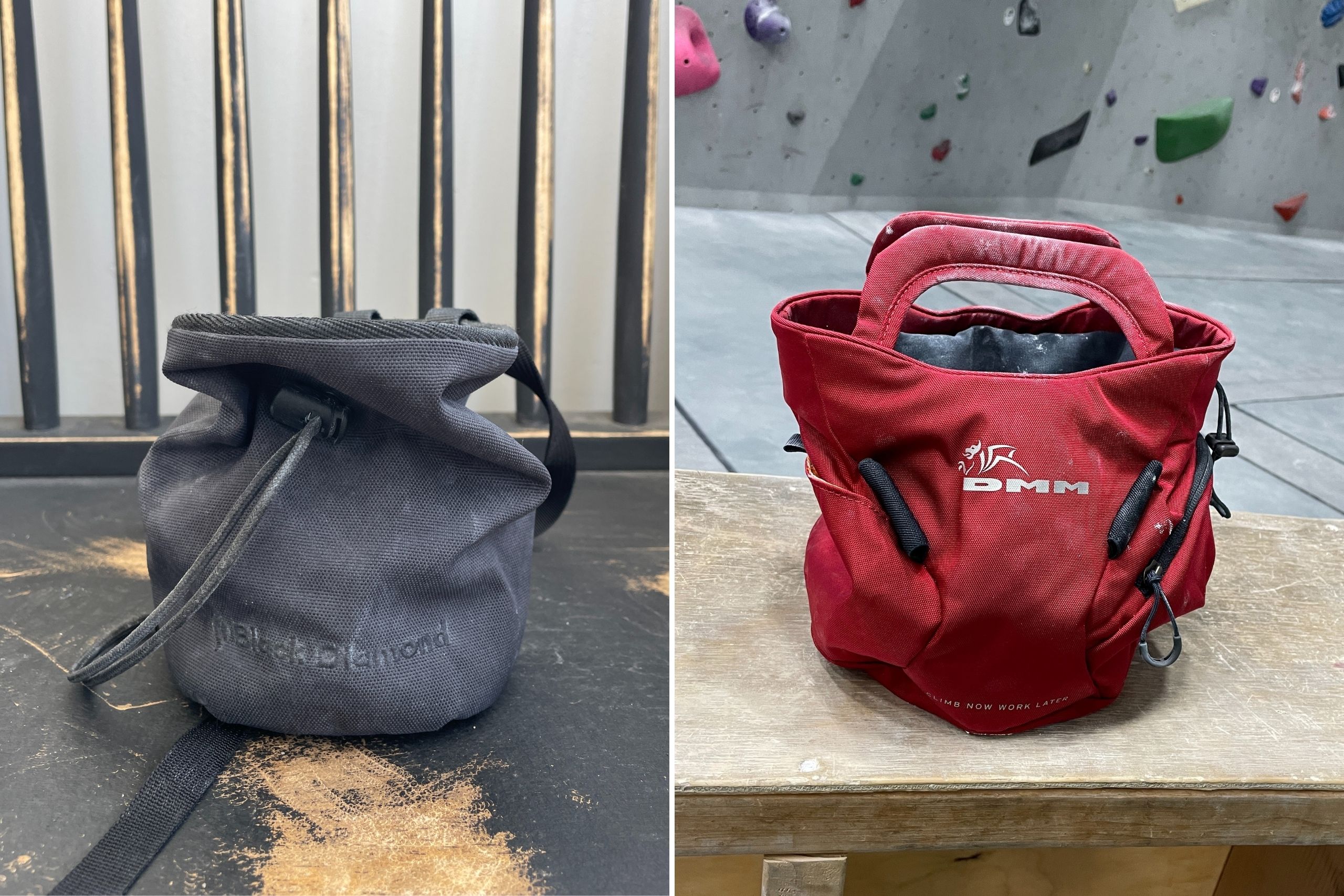
Photo by Kamdyn Christiansen
The Best Beginner Chalk Bags
Any chalk bag that you consider should close securely and keep the chalk concealed when you’re not climbing. It should also be easy to clean—you can throw it in the washer or spray with a hose.
A chalk bag is a pretty basic piece of gear, so don’t get one that breaks the bank. Black Diamond’s Mojo Chalk Bag is simple, tough, and durable. It has a drawstring to conceal the chalk, and the canvas material makes it easy to clean with a quick spray down.
If you’re looking for a bag specifically for bouldering, then DMM’s Edge Chalk Bucket is fantastic. It’s large, so you can fit plenty of chalk bricks, and there are dedicated loops and pockets for other gear (like brushes, hand tape, and a first aid kit). It also has a drawstring to keep the chalk sealed between your climbing sessions.
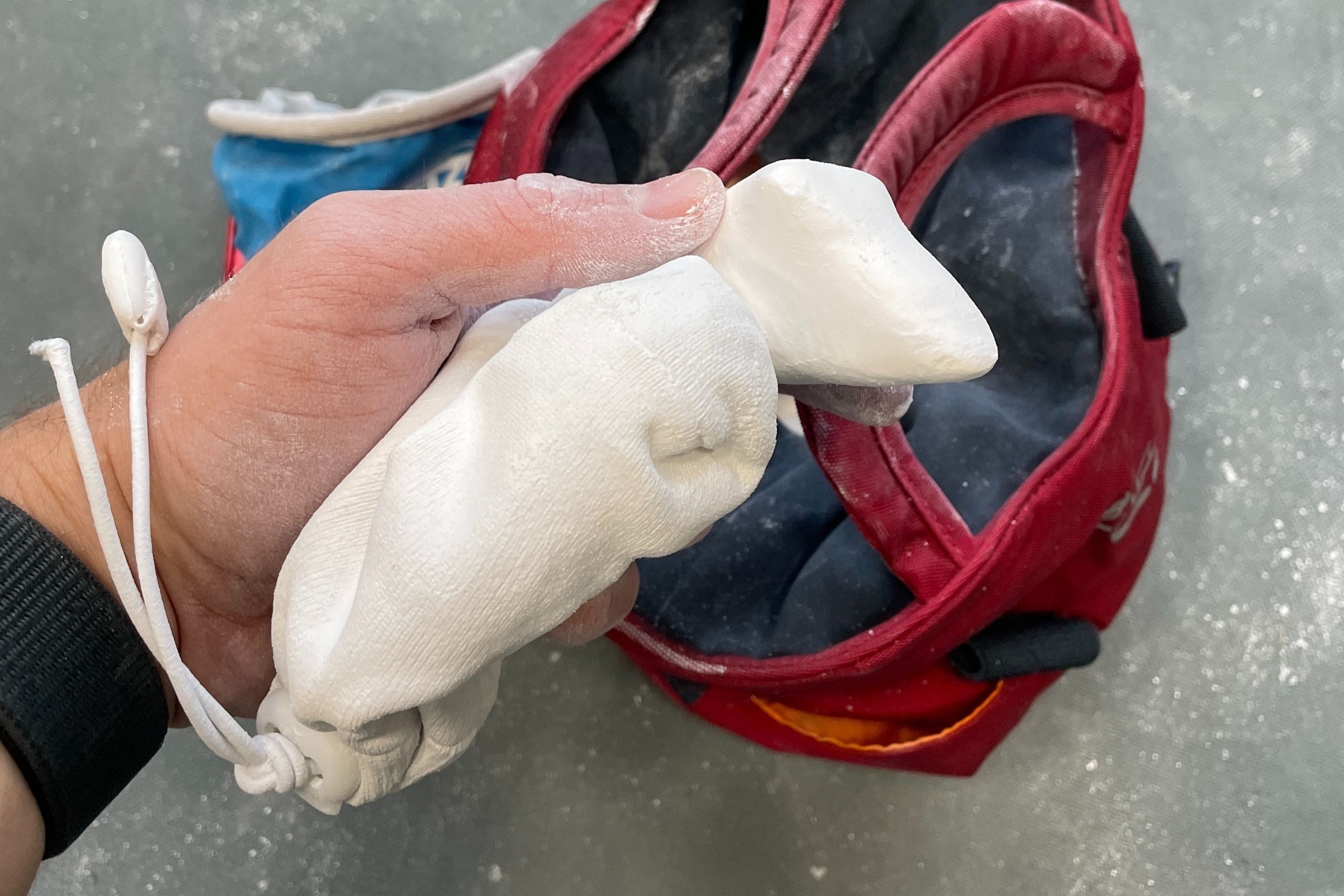
The Best Beginner Chalk
The go-to types of chalk for climbing are powder, solid, or liquid. Powder is by far the most common, easiest to apply, and best for top roping. A solid chalk brick is great when you need to apply it to specific parts of your hand, making it best for bouldering. As for liquid chalk, it’s not ideal for either type of climbing. The only time I see people using it is when they have strong a personal preference for it.
One last note on powder chalk, you need a refillable chalk ball for it. This will keep the chalk from falling out of your chalk bag on a fall, while helping you to easily chalk up when on a route. If you go with a powder chalk, then Friction Labs’ Unicorn Dust is phenomenal.
If you’re needing a brick of chalk for bouldering, the CAP Barbell Gym Chalk is the best bang for your buck.
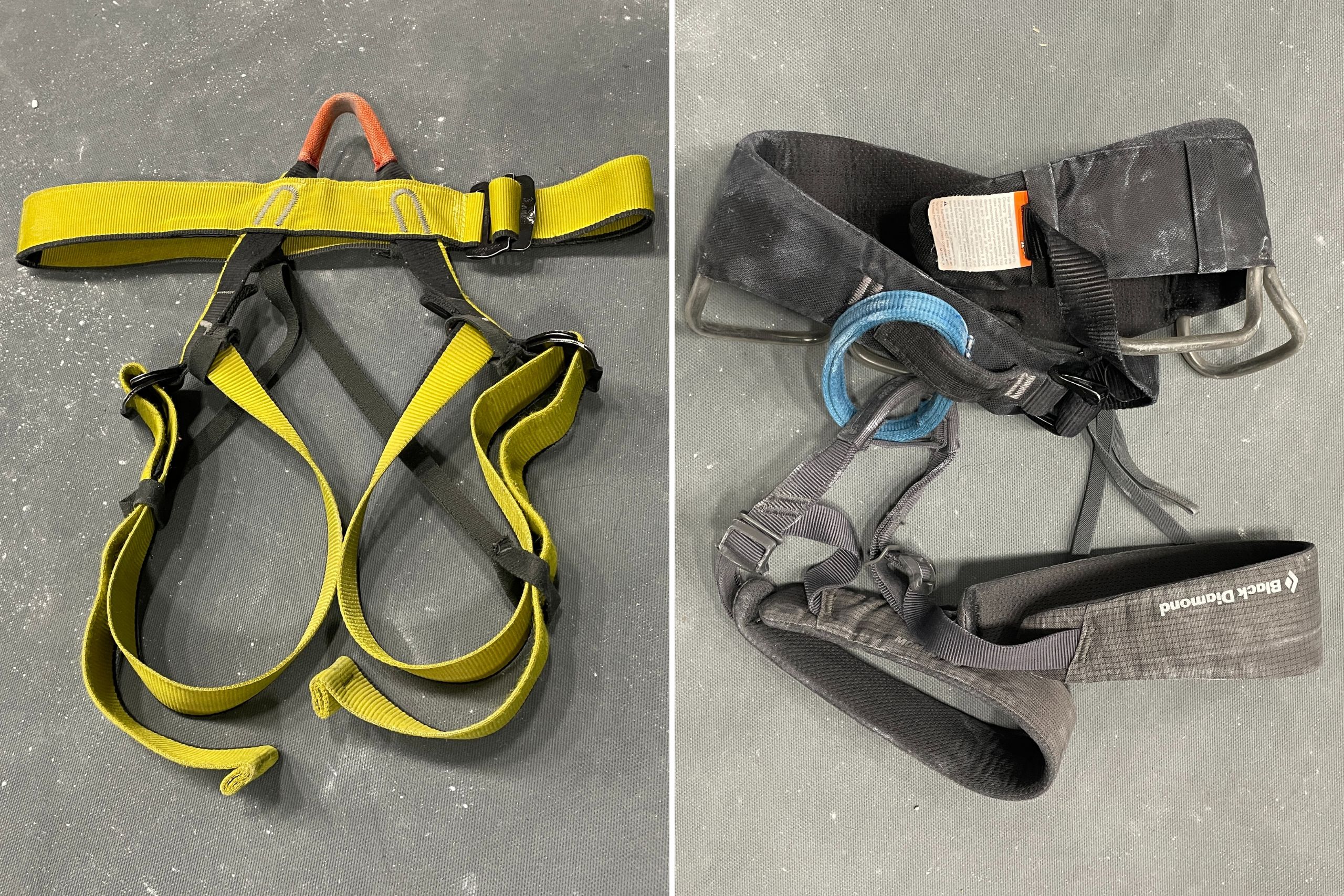
Photo by Kamdyn Christiansen
The Best Beginner Harness
Your harness should comfortably fit your body, before you adjust and tighten it. If you’re relying on the various straps to make the harness bearable, try a different size. A harness needs a front belay loop that connects the waist belt to the leg loops.
Some rock gyms buy harnesses that don’t have a front belay loop. This makes the harness less pleasant to wear, and limits other types of climbing you can do. Make sure your harness has two or more gear loops on the waist belt too. These can hold other gear you might need on a route, like a brush for cleaning holds.
If you’re planning to top rope, you can’t go wrong with the Black Diamond Solution harness. It’s easy to find the right one for you, with sizes ranging from XXS to XL. You can hit peak comfort with the adjustable straps and subtle padding on the waist belt and leg loops. The price is unbeatable for the quality and durability.
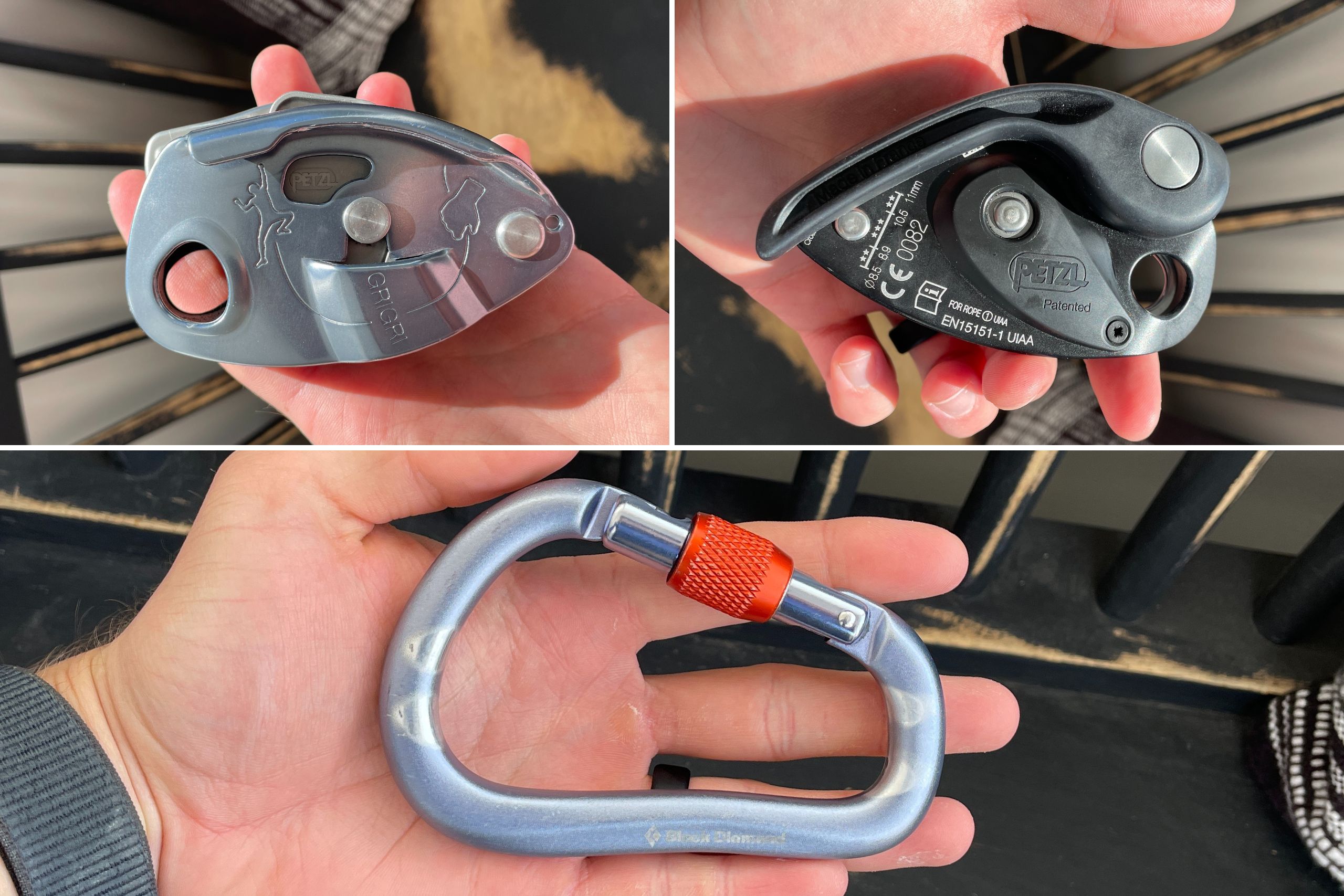
Photo by Kamdyn Christiansen
The Best Beginner Belay Device
I recommend getting the same device that you learned to belay with, since this is what you’re familiar with and you can start climbing with it immediately. That said, If you want to branch out and try something new, modern, convenient, and safe, then the GriGri is the end-all-be-all.
Make sure your belay device comes with a locking carabiner or purchase one separately. Not all climbing gyms provide either of these items, so it’s best to get both.
If you need to pick up a locking carabiner too, then the Black Diamond RockLock Screwgate Carabiner is excellent.
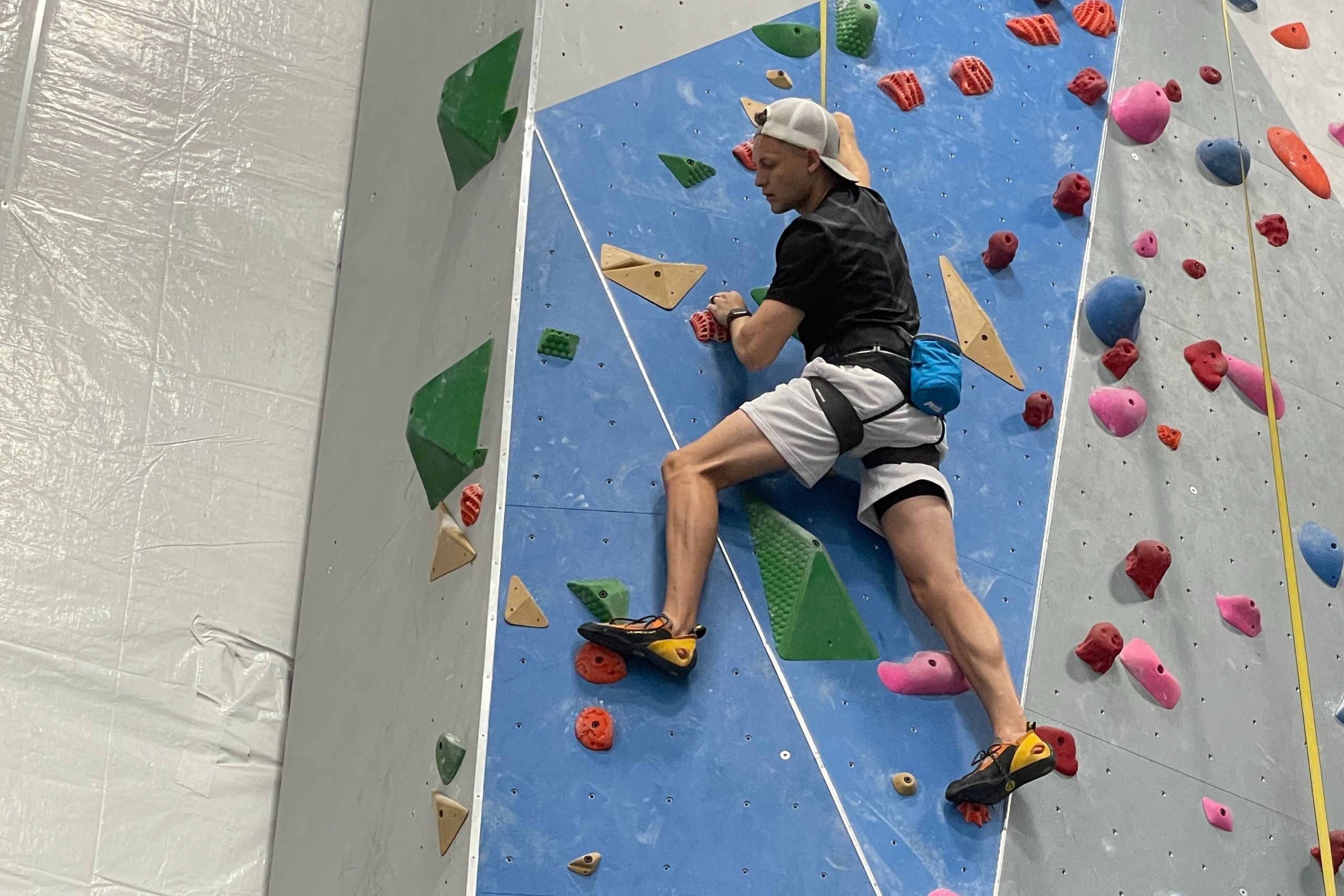
Photo by Kamdyn Christiansen
What Now?
Now that you’ve got your gear sorted, it’s time to go climb! As you consistently climb, you’ll move towards harder, more intense routes. You’ll become a smarter and more dynamic climber. You’ll also become stronger, calmer, and more confident on and off the wall. Welcome to the world of climbing!

